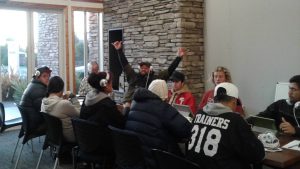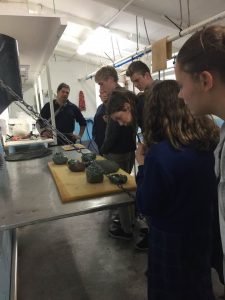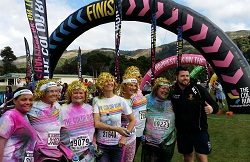Video: The Heathcote Village Project
10 years on from the tragic earthquakes that struck the Canterbury region, The Heathcote Village Project share their story from the epicentre of the quake, with a focus on the power of community when working from a strengths-based model.
“It’s that shift that is happening at a world-wide level of realising that we are living. Therefore we need to think in more of a living systems way. A dynamic way that allows for emergence and doesn’t go pre-prepared.”
Predator Free Wellington: Taking a collective leadership approach to build a social movement.
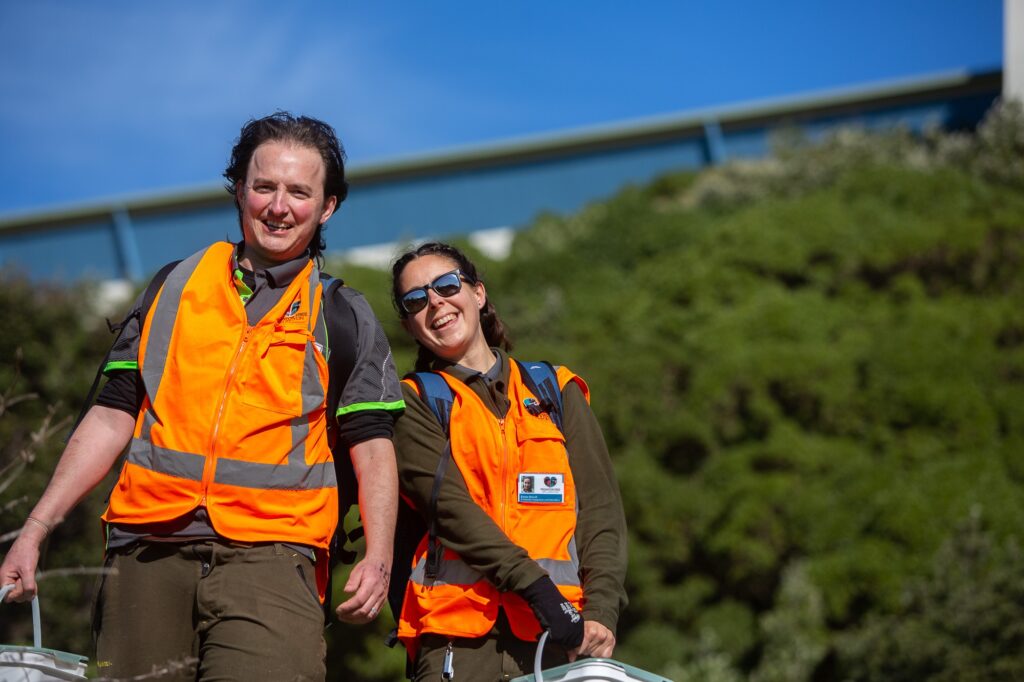
From the get-go, this initiative has been driven by the understanding that the vision of a predator free Aotearoa needs to be strongly rooted in, and driven by local communities. The ever-growing map of participating Predator Free groups, big and small, across the country is testament to the strength and diversity of the Predator Free movement.
James Willcocks, Predator Free Wellington
“People are our biggest challenge in conservation, but they are also our biggest chance. Because if we can have 212,000 pairs of eyes and ears on the case, that’s all the people living in Wellington, that’s the most effective protection network you could ever have. That has been a massive learning for us.”
Across Aotearoa, communities are taking action to enable the aspirational goal of Predator Free 2050. The aim is to completely eliminate the predators most dangerous to our unique biodiversity (rats, stoats, and possums have been identified to be the most damaging of introduced predators). Collaborative efforts are underway at national, regional and local levels to make change happen.
Building on shared local visions
“Taiao – environment at particular places” is one of seven key principles in the national strategy which is enabling ‘bottom up’ innovation and tailored responses. Predator Free Wellington is one of many initiatives underway, their goal to make Wellington the first predator-free capital in the world. They’re moving along at high pace and have nearly completed the first phase of their plan, namely eradicating pests on, and returning native birds to, the Miramar Peninsula. To achieve this, Project Director James Willcocks and his team have built a tight network across the resident community, getting everyone involved in setting up bait stations and traps across the Peninsula.
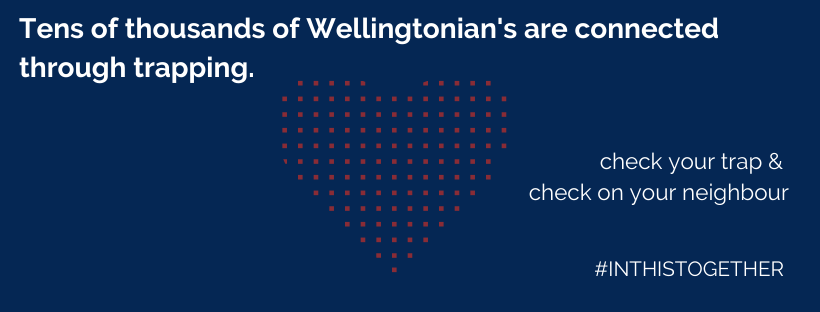
“We designed this project from the bottom up with the community at the centre. Our vision is for both our communities and our native biodiversity to thrive. You cannot have one without the other.”
Read more
Collaborative Local Leadership
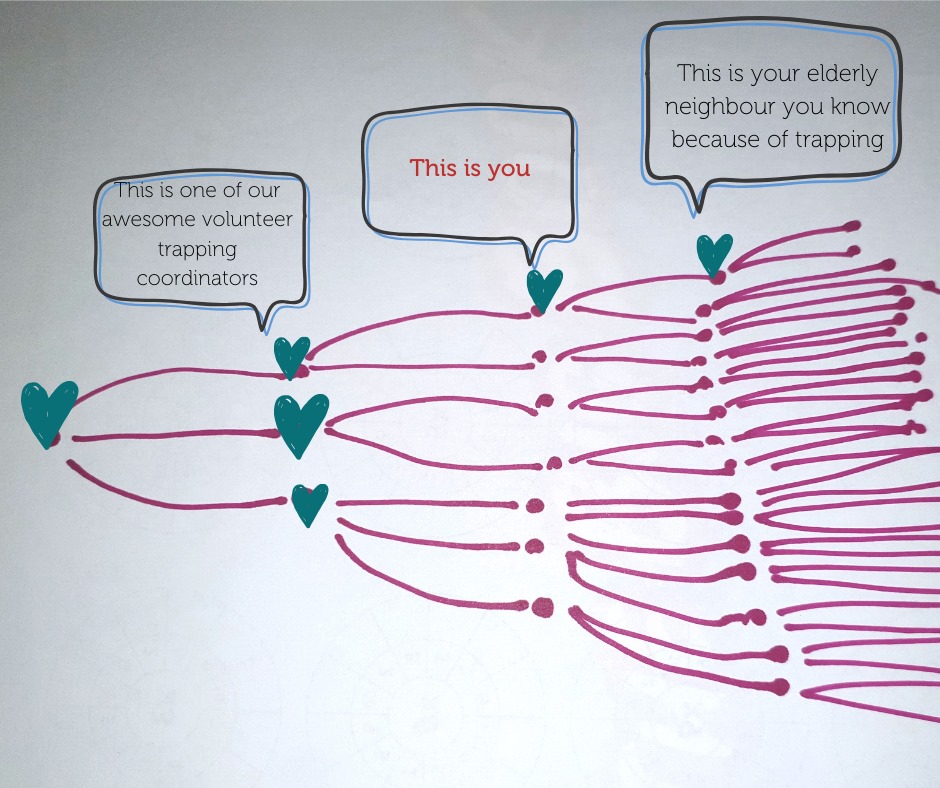
“We really want to create a sense of team and connection for the people. And it’s really worked, neighbours are talking to neighbours about this project, and it’s really driving this huge sense of commitment for the people of Miramar.”
James adds that his team has been absolutely blown away by how engaged the community has been in the project, proving that collective local leadership and the relationships behind it, are the key to success.
“We wanted to kick off a massive social movement. It is not about ‘doing to’ people in that sense – community leaders have stepped up and reached out because they want to do this, and we have then provided them with the expertise, resources and equipment – we’ve given them traps – and they have taken these back into their communities.”
To eradicate the pests, traps and bait stations have to be set up every 50 metres across the grid cast over the area. On Miramar, that is a minimum of 8,000 devices in an area where 20,000 people live:
“Our Engagement Field Officers have gone to knock on every door to talk to people about the project and by doing that, we have received 99% permission to set up traps on private land. This takes a great deal of trust – we cannot take this lightly: you really become part of peoples’ lives when you are visiting them every week. It’s huge social interaction and a huge opportunity for real social outcomes in this space.”
Diversity and inclusivity enable social outcomes
The ability and willingness to look beyond a traditional, westernised conservation model is a key factor in enabling participatory, community-led action. James stresses how much he has learned by working so closely with the diverse neighbourhoods in Wellington:
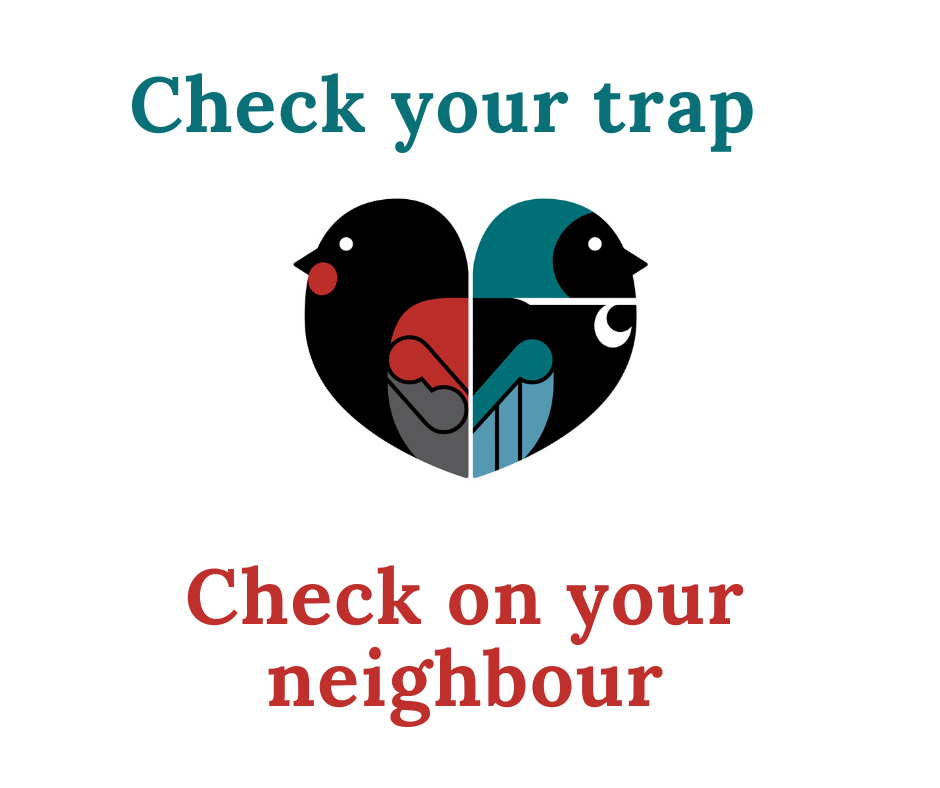
“Another massive learning for us has been working with marginalised communities or communities that can find themselves isolated, and not going in with a westernised, scientific approach. It is crucial to listen to different communities’ needs and perspectives to really get their buy-in to the project. We all care about the same thing but we will get there in different ways.”
James recalls an inspiring success story with “this fantastic guy who had spent a bit of time on the wrong side of the train tracks” some years ago. This person got involved in the cause because his family could not sleep as they had rats in their hot water cabinet. Having great success with their traps, this family then went on to play an instrumental role in linking James’ team with other neighbours and parts of Miramar who would likely not have felt included in a standardised, top-down approach.
Local action as part of the national vision
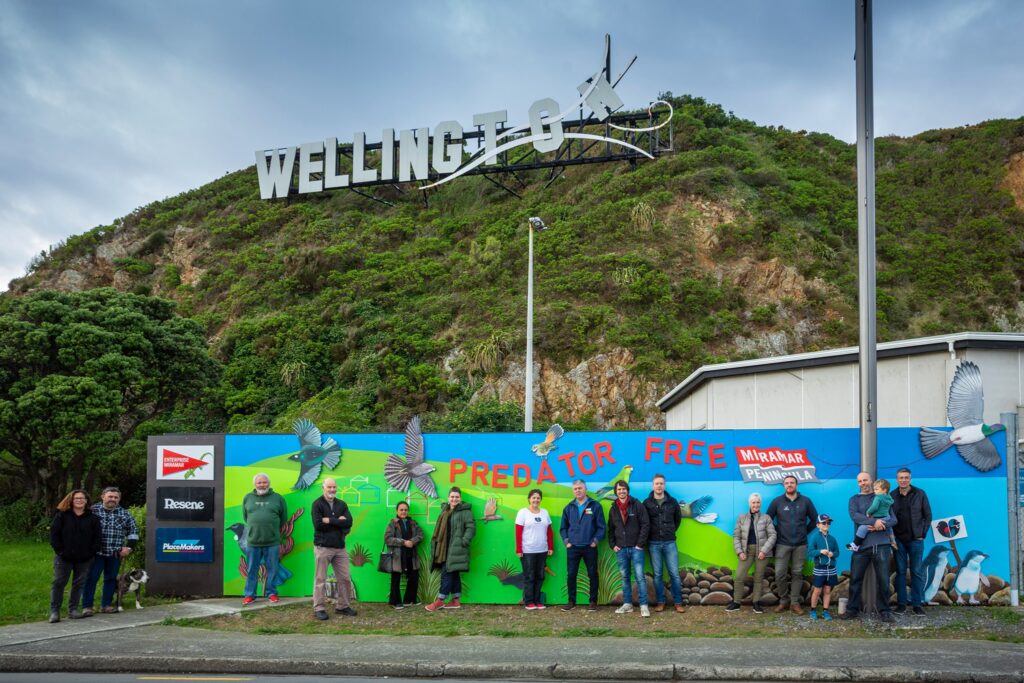
“Making Wellington predator free, that’s not my story to tell. It’s the story of the city of Wellington and its people.”
For a successful movement, James agrees that it’s all about thinking outside the box and to go ahead with holistic and broad approaches with the community at the lead, in order to find a way of working together that enables everyone involved. Having a clear goal in mind, and one that is close to home, also supports connection:
“Predator eradication is one part of the rich tapestry of conservation. Setting up a trap is a simple, straightforward action that people can take, and it links them to the broader global goal of preserving and conservation. Tackling big topics like Climate Change can seem impossible for the individual, but if the community can work together and focus on a tangible outcome through direct action, everyone can contribute. We are all part of nature, and everyone has something to contribute.”
Project C-19: Collaboration across boundaries
The Nelson Whakatū community is no stranger to a Civil Defence Emergency.
Hit by severe weather and floods in 2018, devastating bushfires in 2019, and now, Covid-19.
Within days, a new collaboration between community-led initiatives and organisations dedicated to helping the most vulnerable was formed. Project C-19 is a collaboration between Volunteer Nelson and Neighbourhood Support Nelson, both very active and visible community organisations in the region and funded by Nelson City Council .
Grow from shared local visions
The goal was clear; to support the organisations working with the most vulnerable in the community. To predict which needs might arise and be most crucial, the Project C-19 team developed a work exchange survey to help identify those gaps and needs, as well as to share their strengths, resources, and capacities. This evidence saw the organisations quickly self-organise and reassign their shared capability to respond directly to what they had identified: an increased need for food and housing support, as well as for strong and direct communication – not only between the organisations themselves, but also to the community so that the right source of support can be found for everyone’s individual needs and questions.
C-19 Project Manager Dawn Gauthier says she was amazed how immediately Nelson’s active support networks kicked into action:

“The organisations were so well equipped that within days, helping hands were reaching out to those who were stretched. The proactive and empathic approach of community organisations like Age Concern was impressive.”
READ MORE
Rather than waiting for people to reach out themselves, volunteers and staff at Age Concern Nelson picked up the phone to personally check in on older people in their network. However, what quickly became evident was that a stronger communication link was needed between those working ‘on the ground’ and those facilitating the government’s support measurements during the pandemic.

Project C-19 Communication channels.
Work with diverse people and sectors
To get a clearer picture of what decisions were being made, while providing a link back into this community’s needs and capacities, Project C-19 established a strong link directly into the Civil Defence Emergency Management team.
By participating directly in the daily CDEM Welfare team meetings, Dawn has been able to gather the necessary information first-hand and moreover provide insights into the day-to-day challenges local social service organisations were facing. It also enabled quick, accurate updates back into the community. The result being locally led responsive change across their organisations closing in on those gaps.
Learn by doing
The information is moreover proactively shared in Project C-19’s weekly newsletters, offering a valuable resource to the community and making CDEM’s mahi more visible and accessible.
In addition, Dawn and her team have organised a weekly, “short and sharp” Zoom-meeting with representatives of the CDEM team and Nelson’s community organisations, where questions and updates can be shared directly. Part of these weekly forums is a brief survey checking in on how everyone is feeling about their organisation’s workload, about what has been going well, and where people have noticed gaps.
Build from Strengths
Housing and food supply proved to be one of the biggest challenges during the Lockdown period. The amount of food vouchers distributed by the Nelson Tasman Pasifika Community Trust in the first few weeks alone was “massive”, says Dawn. With the economic impacts of Covid-19 expected to more fully hit our communities over the next few months, Dawn expects this trend to continue.
“Many people may have difficulty understanding that they need help. Some may need help for the first time, having never considered accessing a food bank or social services like mental health support until now.”
Dawn stresses that it is crucial to remove the stigma around topics such as unemployment, homelessness, and mental health problems, and to make access to help and resources as easy as possible.
A focus on positivity and hope paired with strong community networks and a whole lot of appreciation are just some of the strengths and driving force behind this initiative. The collective community responses like Project C-19 are spearheading stronger links between governing bodies, social services, community initiatives, and iwi-led responses such as Manaaki Twenty who are also working closely with the CDEM team, and the people in the community who need support. Dawn says there is hope and determination that these new ways of working will take a lasting hold.
“There is definitely a desire to not just go back to the way things were before, but to try and make things work better for a lot more people as we move forward.”
You can find out more about Project C-19 here, read their weekly newsletter here, and sign up to these updates here.
Te Hā o Mātauranga Kaikoura
Te Hā o Mātauranga – Learning in Kaikōura is a community hub. Local people people doing extraordinary things following the 2016 Kaikōura earthquake.
Kaikōura is a small coastal town located on the east coast of the South Island – largely known for its whale watching and tourism economy. Te Hā o Mātauranga – Learning in Kaikōura , opened its doors in March 2017 only 3 months after the 7.8 magnitude earthquake that struck the town the previous November. Operating from what was once Kaikōura ’s museum building, the space has been transformed into a community collective with workshops and educational training.
Talking to Sarah Beardmore the Coordinator of Te Hā o Mātauranga, it’s easy to see the enthusiasm and love the community have for their town.
“Our main ethos is to promote, enable and encourage learning opportunities within the community. With support of the JR McKenzie Trust, MBIE and the Lottery Hurunui Kaikōura Marlborough earthquake relief fund we are building on exciting prospects, while recognising the impact the earthquake has had.”
One example is MBIE’s Curious Mind Fund. “It enabled us to join with University of Canterbury to work with local youth who have become involved in the post earthquake science research that has brought so many scientists to Kaikōura ” Sarah says SKIP has also been involved in funding positive activities for parents of 0 – 5 year olds – one of the activities, a photovoice project designed to share stories about sleep since the earthquake, will culminate in an exhibition in the anniversary week of the earthquake in November.
“But we want to look forward. So we’re running workshops to garner ideas and vision. Megan Courtney and Kindra Douglas from Inspiring Communities’ ran two workshops here recently, helping the community to build on their existing strengths in a sustainable way.”
Community-led principles are also scattered throughout Te Hā o Mātauranga’s approach to recovery and positive change.
Utilising existing strengths and assets
“The issues facing Kaikōura existed pre-earthquake but they are just greater now. The community Is turning a negative situation into something positive. By capitalising on the environment, using our contacts and our community’s strengths we have come together and enabled the community to move forward using tools like education. An afterschool programme for children run by a passionate local, to create crafts from recycled materials has led to new ideas around adults creating items from recycled materials – hopefully for on-selling. Local experts have come forward to support learning – for example a primary school teacher has run reading afternoons for school children and another is running slam poetry workshops. “
Shared local visions drive change
The group and the community as a whole are focusing on upskilling: promoting education across all age groups. “So we encourage external providers to offer training in Kaikōura , but as well, we support locals to share their skills and ideas.” Te Hā’s space has hosted a number of different educational training sessions from a partnership with He Toki, a Ngāi Tahu Māori trades training academy, who ran a 3 week course supporting people getting back into work, to a tertiary level business administration course run by ARA.
Many people, groups and sectors working together
Te Hā o Mātauranga is looking towards the next five years. The goal of the hub is for our Kaikōura families to have the confidence and optimism to make the choices they want to. Sarah reinforced the important role Te Hā is now playing to “connect and enable locals, local and central government agencies, philanthropists, businesses – basically anyone with a role to get us to that goal!
“By growing a culture of learning in Kaikōura and promoting and enabling learning opportunities, we hope to give people the support they need to grow their skills, confidence and capability.”
For more information, see their Facebook page here.
Discovering what works
By Rachel Jury- Recreation Services Manager, Upper Hutt City Council
What is your situation?
Our role is to support people to be more active, because we know that if people are more active it impacts positively not just on their physical health but also on their mental well being. To date we found that agencies, including local government, were rolling out the same types of programmes over and again – with little success. We decided if we were to get more people involved in being active, we needed to act differently. We decided to take on a more community-led focus which would involve making some of those same mistakes, but this time to learn and tell others about it.
What happened
We developed the ALIVE project. ALIVE is aimed at breaking down the barriers that prevent people from participating in regular active recreation. After a few false starts and a number of staff changes, we got underway. We employed a Team Leader and a Coordinator and it took off.
We identified key groups we needed to focus on such as senior citizens, young women, youth and middle-aged men. We wanted the ideas & activities to be created and designed by them, our local residents. We ran focus groups, all designed differently as it worked for them. For example a group of senior citizens were already meeting in the library doing theatre sports every week –we went along and asked them what they did, and what they would want to do, if anything.
A walking group was created with a social aspect; their walk involves having a drink at a café. The walking group grew as participants talked to other locals. And it changed. Some of the walkers decided to cycle instead. We also added to it, to give them a new experience we included Nordic walking which has now become part of some of the group’s activities.
The ALIVE Coordinator had a number of conversations about how we could work alongside young people. Figuring out where the barriers stood, she decided to go beyond mainstream education facilities eventually landing in the Teen Parent Unit (TPU) at Heretaunga College. They welcomed the chance to get back into some kind of organised activity, this recognises the massive change to their lives after baby is born, often they are more isolated. They wanted their baby included on many occasions – something to build activity into both mother and baby’s lives. One example: parent and toddler pool sessions.
Developing from this some of the TPU mums applied for and received grants from our Sporting Chance fund that helps pay the costs of organised sports, so they were re-engaging in sport.
Adding more value is the greater engagement between the mainstream school and the TPU – where they never met before, they are now coordinating events together.
We are ow also talking to the Marae, and a local youth worker to research new options.
The change we have noticed
We have noticed that our goal of increasing participation in physical activity through our local residents has spread to other aspects; social engagement has grown for instance. The walking group now meet about 3 times a week. Local residents are re-engaging them with their communities.
There are natural leaders that just need support to step into leadership. In one case we identified a person from one of our groups and gave her leadership training, she now runs her activity.
We haven’t got as many men involved as we would like and we have noted that is most likely because we need to find a different way again of working alongside them.
What we’ve learned
Doing this well takes time. Having the right people in the right places is vital. One size doesn’t fit all so having people that are passionate and comfortable working with locals, that they work to their strengths and feel part of the group. This may mean having a number of coordinators vs one but it makes a huge difference.
As a sector we make quite a few assumptions. We talk about money being the biggest barrier to getting people active but we need to re-define this. Walking doesn’t cost money. We can’t just assume what the barriers are. We need to break down stereotypes, find out what our local residents want and then get alongside them and do it.
We know there is a lot more we could notice and learn from ALIVE. We are now undertaking a gap analysis which will inform a wider evaluation of the programme enabling us to adapt it and make it even better.
The best thing we did was ask the people what work for them – we didn’t assume what they wanted.
Read more about how the team at the Upper Hutt City Council is helping the community to become more active.
My Inspiring Community – Randwick Park
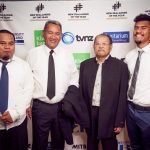 They began asking locals what would improve their place … a few years later Randwick Park has won 2017 community of the year. Maree Beaven recently talked to us about what they’ve achieved so far and how.
They began asking locals what would improve their place … a few years later Randwick Park has won 2017 community of the year. Maree Beaven recently talked to us about what they’ve achieved so far and how.
Randwick Park has also very kindly shared their story to be apart of our 2017 election manifesto please feel free to read it, and share it.
Think local and let local do
By South Waikato Mayor, Neil Sinclair
 A truly multi-cultural District the South Waikato is right in the centre of the North Island between Hamilton Rotorua and Taupo. We are home to 23,000 people, of which about 30% are Maori and 11% Pacific Island. We are a young district, our main town, Tokoroa, was established in the 1950s when the paper mill at Kinlieth was built. Now we are 50% farming 50% forestry.
A truly multi-cultural District the South Waikato is right in the centre of the North Island between Hamilton Rotorua and Taupo. We are home to 23,000 people, of which about 30% are Maori and 11% Pacific Island. We are a young district, our main town, Tokoroa, was established in the 1950s when the paper mill at Kinlieth was built. Now we are 50% farming 50% forestry.
Yes we had a tough image, an image that unfortunately lives today. We are however a proud caring compassionate community. I know, I was a dentist for 40 years. We have the lowest crime statistics for the Bay of Plenty and my towns are almost devoid of any graffiti. But like all rural New Zealand towns we are looking at a decline in population and an aging population. We have, additionally, high youth unemployment, some poor housing stock and we are generally regarded as being a low socio economic district. It’s not an exciting picture, so why are we so confident about our district and our towns?
Councils and communities in general have to recognise their situation, accept who they are and then they can work out just what they have to do to create change. Identify your local strengths.
For us it is that we have a particularly caring, resilient community. In 2004, when I first became Mayor, through a series of circumstances I, with many others, stood on an empty section of Council land on a Thursday evening. By Sunday lunch time I was opening a children’s park on that land, with a sound shell, flying fox, BBQ, unique play equipment, swings, and a graffiti board. All done by the community. All manner of people were involved in the construction; clubs, groups, individuals, businesses, groups of people who fed us. $20,000 was raised, not a dollar from Council. Looking back now not even a resource consent! All done in 48 hours.
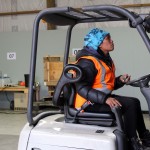 So if the community were going to be the doers then it would require an innovative, imaginative, courageous council to work with them and harness that spirit. High youth unemployment was one of the big concerns then. Council knew education was the way forward so we instituted the Mayoral Scholarship. We have great schools producing very talented individuals. Our town, because of the mill has many high-quality engineering firms; many exporting,all calling for trained staff. Council looked at the Otorohanga jobs project and decided not to copy but upgrade it. Council put $90,000 into the development of a Trade Training Centre and instructed that the best of lathes be bought. If we believed in our youth, then they needed the best equipment. Give them second hand gear and that will be how they think we feel about them.
So if the community were going to be the doers then it would require an innovative, imaginative, courageous council to work with them and harness that spirit. High youth unemployment was one of the big concerns then. Council knew education was the way forward so we instituted the Mayoral Scholarship. We have great schools producing very talented individuals. Our town, because of the mill has many high-quality engineering firms; many exporting,all calling for trained staff. Council looked at the Otorohanga jobs project and decided not to copy but upgrade it. Council put $90,000 into the development of a Trade Training Centre and instructed that the best of lathes be bought. If we believed in our youth, then they needed the best equipment. Give them second hand gear and that will be how they think we feel about them.
A group of the leaders from those engineering firms came together and set the syllabus around what they wanted as employers.The Waiariki Polytec then came on board as the Industry Training Organisation – with our lathes and industry-set syllabus. It has set the bench mark for Trade Training schemes.
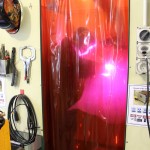 We now have engineering, auto engineering, welding, horticulture and farming training. The job uptake by our students is 97%. They know if they stay home and don’t attend someone is ready to take their place.
We now have engineering, auto engineering, welding, horticulture and farming training. The job uptake by our students is 97%. They know if they stay home and don’t attend someone is ready to take their place.
I have many more examples: Local Communities like mine have that community determination; Councils like mine have the ability to create partnerships with industry, such as what we did with Fonterra’s new $385 million milk drier, the Blue Pacific Minerals expansion, John Deere opening an engineering factory. There is the 50,000 hectares of forestry conversions that have been done using best farming practices and have brought more than 90 new families into the District.
So we can do, but how do we get Central Government to recognise that sub regional growth is taking place? Small communities like mine are making things happen because we have to if we are to maintain that which we treasure. I have had only one Cabinet Minster visit – he was in and out for the opening of the rail hub. Regional Growth they say is exploding but they mean Hamilton. We need recognition of sub-regional needs.
Encourage Local Councils like mine to be brave, courageous with their innovation and imagination. Encourage us, don’t wait and then say congratulations. As always finance is the biggie. Most of what we have done took more time than it should have as we had to justify every penny. We aren’t rich – far from it – so caution was the message, and frankly sometimes courage. We can do. Rural New Zealand can do, we all need to think local and let local do.
Saving more than the birds
By K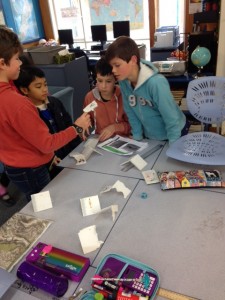 elvin Hastie – Crofton Downs Predator FreeI’m a guy who was out the front gate of his house and saw a stoat cross the road in front of him and decided to start Crofton Downs Predator Free Community as a means to alleviate my inner guilt and rage.
elvin Hastie – Crofton Downs Predator FreeI’m a guy who was out the front gate of his house and saw a stoat cross the road in front of him and decided to start Crofton Downs Predator Free Community as a means to alleviate my inner guilt and rage.
We decided to engage our place to become New Zealand’s first predator free community. Free of rats, stoats, weasels and possums. No one had ever tried this in a built up residential area, so we bonded the community together in a common goal.
We tend to think of these things as the birds and the reserves but we flipped that on its head and said let’s look at the community and ignore the birds.
We didn’t ask the experts how this could be done because we wanted to rewrite the rules without knowing what the rules were. We wanted to understand what the true barriers were and whey we were still going backwards in New Zealand when it comes to our environment.
I was keen to figure out what was most important: the outcome of trapping is more birds, lizards, invertebrates…..obvious right? Well no not really. We gave 500 hundred people a sense of PLACE and ownership in our small community.
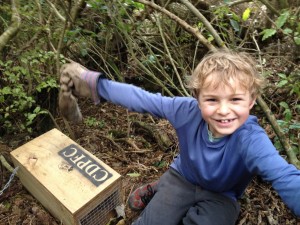 • We created community building and partnerships
• We created community building and partnerships
• A sense of purpose
• Exercise and wellbeing
• Connection to the environment
We gave our community ownership and they wrote the script.
We didn’t focus on an outcome, because often people want to jump straight to fixing what they perceive as the problem. In our case that would have been to jump straight into saving the birds by killing the predators, which is fun, but simplistic. The true outcome – which could be resolving a bigger problem is not always evident upfront, and that takes time to emerge.
On the 1st of November 2015 Crofton Downs was crowned NZ’s first Predator Free Community; free of rats, stoats, weasels and possums after monitoring zero. Some experts say to me this is not a true measure, it takes three years to declare an area predator free. So while this debate goes on – rather than wait three years to be declared predator free – we have widened the programme. It’s pretty hard to be predator free when your neighbours aren’t. We have expanded to four neighbouring suburbs that will now encompass 900 hectares under residential control. And another 1,500 hectares under best practice linked reserve control with 1,000 DOC200’s (traps) from outside the Zealandia Café to Mt Kaukau in the North and our birds are flourishing.
We have also partnered with other organisations like Zero Invasive Predators (ZIP) who are on the cutting edge of predator control in this country.
Wha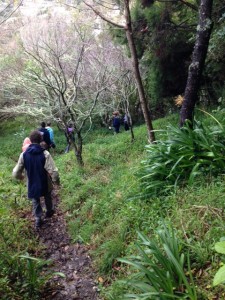 t happens when the predators are gone? Our community is finding new and wonderful ways to fill the gaps. People are becoming more responsible pet owners, people are watching over our Kaka fledglings as they drop on the ground, more planting is taking place and we are building new tracks and lining them with traps.
t happens when the predators are gone? Our community is finding new and wonderful ways to fill the gaps. People are becoming more responsible pet owners, people are watching over our Kaka fledglings as they drop on the ground, more planting is taking place and we are building new tracks and lining them with traps.
People are moving further into the landscape- walking, running, biking further, widening their aspirations and linking with our neighbouring communities to find out what else we can achieve.
If we adopt this way of working in communities I believe we will see:
• durability
• resilience
• woven aspiration and
• enduring regard
So while the battle for the birds continues across the wider landscape, we can all do our bit and every little bit no matter how small makes a big difference, it is no less important than the big bits.
Stone Soup – a mix of vision and action
By Judy Kumeroa
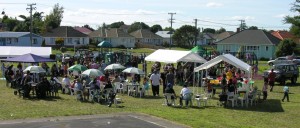 Te Ora Hou is based in Wanganui – we are a Maori, faith-based team, with six centres across Aotearoa, New Zealand.
Te Ora Hou is based in Wanganui – we are a Maori, faith-based team, with six centres across Aotearoa, New Zealand.
The foundation of our work is an initiative called Tiakina ō Tātou Tamariki ( run in Gonville West, Castlecliff South in Whanganui and and Kaiti/Titirangi in Gisborne) and it’s all about leading change for ourselves. This story concentrates on Stone Soup in Whanganui but it includes what we are learning from both neighbourhoods.
Our neighbourhood was not functioning well in 2007. We had a low trust in services and a low trust in each other. We then experienced a trauma and the impact raged across the community. In that moment we were activated to think and to act differently. We began to share ideas, and that is how Stone Soup began.
Stone Soup is a folk story from Eastern Europe – the philosophical point of the story, which is key to our place, is the belief that each person in our community has something of value to offer.
Stone Soup is a mix of things based around a vision for a peaceful, connected, caring community.
It’s a community room based at a local school. It is a bunch of great ideas that we try; such as a craft group, a walking group, Stone Soup radio station, Growing Gardeners and community dinners.
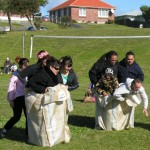 It’s a gathering we hold every two months at the local park, led by residents and others passionate about our collective capacity.
It’s a gathering we hold every two months at the local park, led by residents and others passionate about our collective capacity.
It’s a table at the gathering to sit around and talk about what’s hot, what’s not and what we want to do about it.
These are courageous conversations, sometimes making ourselves vulnerable to each other. We talk about child safety, speeding cars, bullying. We celebrate success from sobriety to the birth of a child.
We’ve acted on about 10% of the ideas generated from the korero across these activities including:
- Establishing a boys intermediate age youth group in response to concerns about unhealthy behaviours.
- Supporting three residents onto a school board to address community concerns.
- Developing a Driver Licence programme
- Supporting a woman to become a licensed Zumba teacher in return for one low cost Zumba class a week.
We’ve also developed an intentional conversation about family violence, the dynamics, and the various support residents can provide.
Empowering each other and taking steps to be an activator in your community is not a linear process! There are four key learnings that I hope you will find useful:
Enable people’s voices to be heard
The importance of this is illustrated in the journey of one of our neighbourhood mothers. Her family has a long history with services, and up until recently her children were under CYF care. She came to one of our park gatherings and after encouragement from us told her story, mentioning eventually that she was an alcoholic who had been sober for nine months, so things were going well for her. She told everyone if she could do others could also. This mother is now qualified in elder care, she got her first job, at 37 years. Her children are back her care, she is still alcohol free and she has found her voice.
Work with who you have
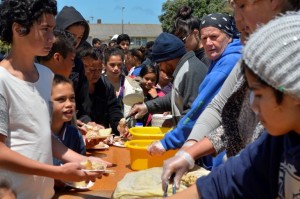 The impact of harmful, criminal gang behaviour had been one of the community’s biggest concerns, lives were being lost. After a number of korero our approach settled on inviting everyone to be part of the Stone Soup journey. The behaviour of one group was particularly challenging but over time their senior leadership articulated an aspiration for a better quality of life for their whanau. We are quietly encouraging that group, offering support to individuals at levels they can accept It’s a long term journey. Gang behaviour was not a top concern in our 2016 neighbourhood survey. This doesn’t mean all harmful behaviours have changed but we see change happening.
The impact of harmful, criminal gang behaviour had been one of the community’s biggest concerns, lives were being lost. After a number of korero our approach settled on inviting everyone to be part of the Stone Soup journey. The behaviour of one group was particularly challenging but over time their senior leadership articulated an aspiration for a better quality of life for their whanau. We are quietly encouraging that group, offering support to individuals at levels they can accept It’s a long term journey. Gang behaviour was not a top concern in our 2016 neighbourhood survey. This doesn’t mean all harmful behaviours have changed but we see change happening.
Practice Sugar-Free Story Telling
It’s tempting to sugar-coat our story, to make our stuff look better than it is. To roll out the successful achievements in a blaze of glory, to hide the unimpressive stuff, to simply deny the existence of the failures.
We were mindful of this trap and turned to Inspiring Communities to help us carry out a survey to measure change. The results were not that flash – the change we thought we’d seen wasn’t strongly backed up by data. We were gutted. We asked I C’s Denise Bijoux to ask us the interrupting, critical and hard questions to trigger ideas – think with fresh eyes. Having someone outside our community ask those hard questions has been valuable.
Understand Effective Funder Relationships
We’ve had funders join us along the way. A genuine high trust relationship, multi-year funding or cross-funder arrangements, feeling safe to tell the stories of failure and accountability reporting that captures stories of change are what we value the most.
Substantive relationships with supportive funders who are open to new approaches, has enabled us to shift our focus from filling funding gaps to focus on the vision of change we have – this is a Community Strategic Plan.
more information: teorahou.org.nz
Cherry Chaos Creates Connections
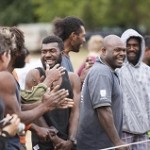 What better way to welcome people into a community than with a huge food fight challenge? Well that’s what we do in Roxburgh, Central Otago.
What better way to welcome people into a community than with a huge food fight challenge? Well that’s what we do in Roxburgh, Central Otago.
During summer the population of Roxburgh (usually about 500) explodes with hundreds of seasonal workers arriving from all over the world to work in the orchards. Seasonal workers are an important part of the community and the local economy, and it is important that they feel welcome, valued and connected.
Arriving in a new place can be a challenge, particularly when you’re living and working in a different country and a different culture. Local community group, Teviot Prospects, wanted to come up with a way to welcome their international workers and give them an opportunity to connect with locals and other like-minded visitors.
They wanted to develop a fun and engaging event to get as many people to take part as possible. It needed to be something that visitors and locals could join in together in a relaxed environment to build connections and have some fun.
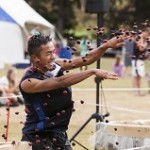 The idea of a food fight challenge was floated…and Cherry Chaos was born. It was perfect – a celebration of the fruit harvest and a fun event for the whole community to enjoy!
The idea of a food fight challenge was floated…and Cherry Chaos was born. It was perfect – a celebration of the fruit harvest and a fun event for the whole community to enjoy!
Lots of work went into developing the concept, planning the event, and finding equipment and produce. Members of the group worked hard to make sure the event went off without a hitch, health and safety requirements were met, volunteers organised and the event promoted to the masses.
Local orchardists were hugely supportive providing the fruit, sponsoring teams and giving their workers time off to compete. The produce used for the event was only suitable for stock food and not fit for human consumption. They were simply intercepted for a day of fun and then put back into the food chain.
Cherry Chaos – obstacle course
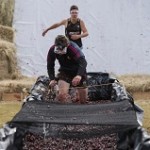 For the main event teams of six people completed an obstacle course against the clock, while opposing teams pelted them with cherries. Scaling walls (while slipping on cherries), crawling under nets (through squelchy cherries), pushing teammates in wheelbarrows (being pelted with cherries) and navigating drums and crates full of messy cherries was all part of the chaos. And the result? A hugely entertaining mess of cherries with everyone having a fabulous time – competitors and spectators alike.
For the main event teams of six people completed an obstacle course against the clock, while opposing teams pelted them with cherries. Scaling walls (while slipping on cherries), crawling under nets (through squelchy cherries), pushing teammates in wheelbarrows (being pelted with cherries) and navigating drums and crates full of messy cherries was all part of the chaos. And the result? A hugely entertaining mess of cherries with everyone having a fabulous time – competitors and spectators alike.
Competitors said, “we’re having a blast”, “it’s so much fun”, and the sheer joy on their faces confirmed it.
Something for everyone
Getting in a cherry mess is not everybody’s cup of tea, so those who didn’t want to ‘run the gauntlet’ were able to take part in a number of other activities, or simply watch on and enjoy the atmosphere. Stalls provided refreshments and hot food, and a local band entertained the crowd with live music.
‘Slingshot Hit the Spot’ and a horizontal bungy were fun activities for younger people to take part in. A Cherry Cooking competition with ‘cherrylicious’ categories of pies, cakes and condiments saw many delicious creations entered and was very popular with both entrants and judges!
The entire event was such a success that Teviot Prospects are planning for it to be an annual fixture in the area’s event calendar – and who knows, next year could be even bigger and better!
By Genevieve Heal, Community Services Projects Officer at Central Otago District Council
http://www.centralotagonz.com/community-development

